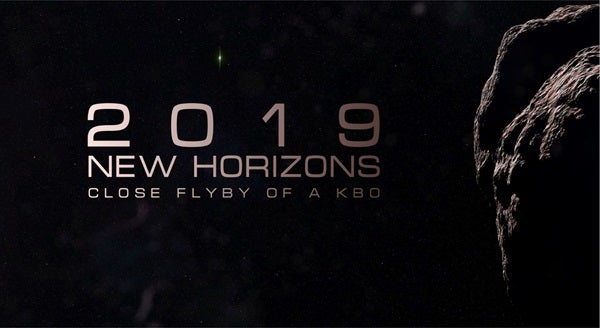Planetary scientists from around the world have flocked to Baltimore, Maryland, to cover the first-ever close-up exploration of a Kuiper Belt Object, beyond the orbit of Pluto. The flyby will take place on New Year’s Eve and New Year’s Day, by the New Horizons spacecraft, which flew past Pluto in 2015.
The Kuiper Belt is a third population of bodies in the solar system, beyond the major planets and the main belt asteroids. It lies far out, beyond Neptune and Pluto, and consists of probably hundreds of thousands of small objects that represent primitive materials affording a window into the early state of our solar system and its formation.
The New Horizons team, led by planetary scientist Alan Stern, chose an object discovered just a few years ago, designated 2014 MU69, now called Ultima Thule (pronounced TOOL-ee), a Latin phrase meaning “a place beyond the known world.”
This small body probably consists of dirty ices and rocky materials, and stretches only about 30 kilometers across. It is probably reddish due to the radiative decay of materials on its surface ices, and reflects only about 10 percent of the light that strikes it — it is exceedingly dark. The lack of rotation observed by scientists tracking the object’s light curve suggest that perhaps it is elongated, or consists of two or more lobes, or perhaps contains material that is loosely aggregated together. A possible unusual structure of Ultima Thule will be one of the interesting possibilities as the spacecraft approaches more closely and send back images over the next few days.
The encounter will take place a long way from home. The flyby happens 6.62 billion km (4.11 billion miles) from Earth. So the information being send back rom New Horizons, which is coming back at an amazingly data rate of 1,000 bits per second, will also require more than six hours to return to Earth.
The flyby will also take place at a respectable distance of 3,500 kilometers (2,200 miles), meaning that — in the best images — features as small as about 30 meters (100 feet) across will be resolved.
And as with all such historic missions, the best parts are likely to be surprises. The spacecraft is functioning perfectly well, and everyone here in Maryland looks forward to history being made tonight. Senior Editor Rich Talcott and I are here on site and will be covering the mission details throughout. Check us on Astronomy and Discover’s web sites, and also on Facebook, Twitter, and Instagram.
Oh, and there’s a big bonus coming tonight. Our pal Brian May, astrophysicist and Queen founding member and guitarist, will premiere a new solo single tonight in honor of the New Horizons mission.
Get ready for an amazing New Year’s Eve party!










